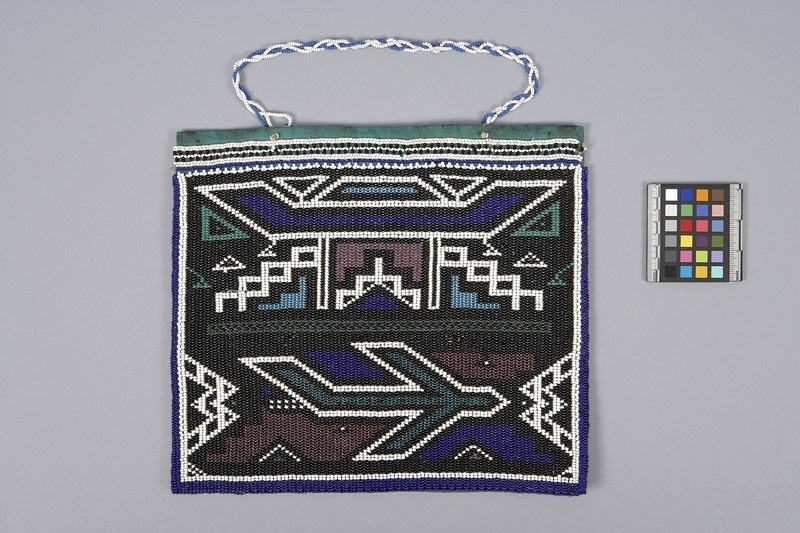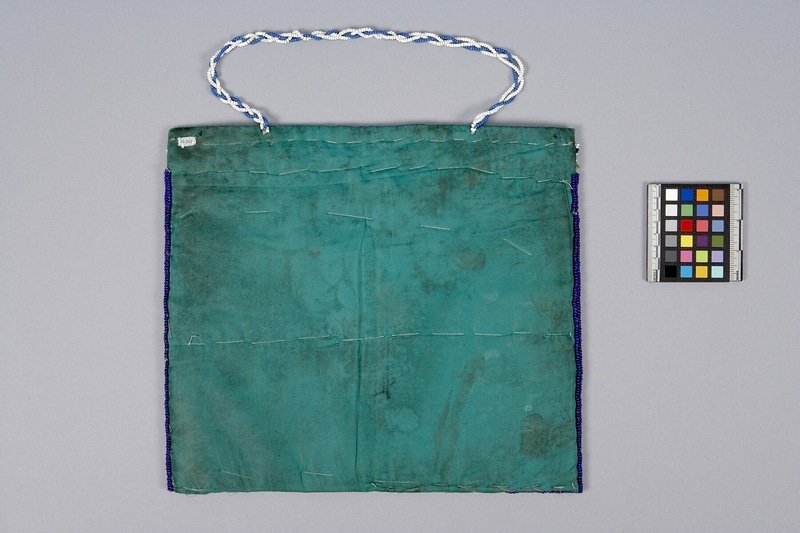Apron Item Number: Ab348 from the MOA: University of British Columbia


Description
Rectangular beaded apron sewn onto a green fibre backing. Apron has a beaded geometric pattern on the front in blue, white, black, purple, and green. There is a white and blue beaded strap at the top that has been braided and attached to the back of the apron.
History Of Use
Unmarried, initiated girl’s apron, called isiphephetu, typically with a pattern that represents architecture. According to Powell, in 'Ndebele: a People and Their Art', it is a 'stiff rectangular apron worn by young girls after they have completed the period of seclusion which constitutes female initiation. "In contrast with the ligabi, the isiphephetu’s beading is usually more than merely geometric in its design, and it is here for the first time that the symbolism of the house is essayed in the bead cycle. Often the iphephetu is also the site for more fanciful flights of imagination in Ndebele beading, and such motifs as electric lights, chimneys and telephone poles are often in evidence. There is a good reason for this : the isiphephetu is made by the wearer’s mother while the girl is in initiatory seclusion, and it serves to express the mother’s aspirations for her daughter. In the older context, these translate themselves into a range of domestic symbolism, mainly in the form of house motifs, but as the bonds of traditional appropriateness have loosened, such motifs as the aeroplane, which in the Ndebele language is known as a ‘Ufly’, have become increasingly common…" The isphephetu is usually worn with a backskirt, known as an isithimba.
Item History
- Made in South Africa during 1950
- Owned by Peter Christie before October 29, 1987
- Received from Peter Christie (Seller) and Museum of Anthropology Shop Volunteers (Funding source) on October 29, 1987
What
Who
- Culture
- Ndebele
- Previous Owner
- Peter Christie
- Received from
- Peter Christie (Seller) and Museum of Anthropology Shop Volunteers (Funding source)
Where
- Holding Institution
- MOA: University of British Columbia
- Made in
- South Africa
When
- Creation Date
- during 1950
- Ownership Date
- before October 29, 1987
- Acquisition Date
- on October 29, 1987
Other
- Item Classes
- beadwork; textiles
- Condition
- fair
- Current Location
- Case 102
- Accession Number
- 1235/0008